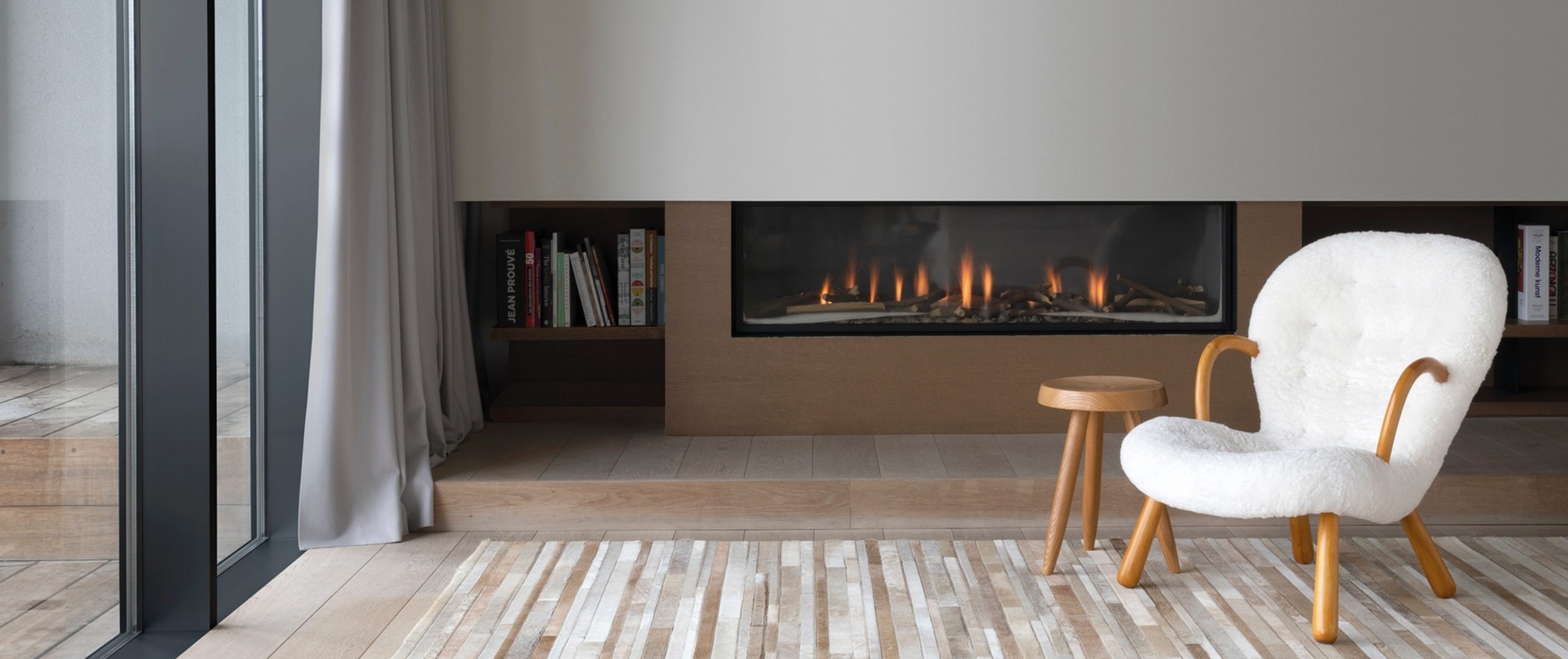Protect Your Pipes
Depending on the region of the United States you’re in, you’ll need to protect your pipes from bursting this winter.

by Chasity Rodriguez
It’s the New Year, but you’re probably back to your same old work from home schedule—taking calls from your couch, working late hours, and even checking emails on the weekends. In the midst of this ongoing pandemic, our work life has merged with our personal life so that there’s little separation between the two. “Many employers are piling greater responsibilities on their staff and promoting a culture of open communication outside of traditional work hours. Due to fear of losing their jobs, many individuals working from home feel obligated to meet these demands,” says Jeffrey Ditzell, D.O., a psychiatrist based in New York City. When work and life are under the same roof, it can be difficult to keep them balanced.
As hard as it may be in these times, maintaining a healthy balance between your work and your personal life is essential for your mental and physical health. People who have blurred, or nonresistant, boundaries between their work and personal lives tend to have higher levels of stress and feel more distressed over time. Eventually developing all of the health issues that come along with it, but the good news is you can prevent this imbalance and all of the negative impacts of it by drawing a fine line between your personal and professional life.
“Setting firm boundaries is crucial for a strong work-life balance,” says Regine Muradian, Psy.D., a clinical psychologist based in Los Angeles. Learning how to establish boundaries will set you on the route to keep your work-related activities in control and prioritize more time for yourself, even when the pandemic is over. Here are five Tips for a Healthy Work-Life Balance that will help you build great WFH habits.
Designate when you will start and end the workday. When you set these times in stone (as best as you can), avoid checking your work email or accounts outside of your allotted work hours. Use technology to your advantage by using the various apps and digital reminders that make it more difficult for you to break your own rules and access things outside of work time. Although technology can feel like it’s taking over our lives and infringing on our work-life balance, we can actually use it to our benefit in helping us stick to the boundaries we know are healthy for us. This can mean setting time limits, turning off your active status, or even activating an auto-reply to let others know you’re not available outside your work hours.
An imbalance between your work and personal life can be emotionally draining and cause burnout. Ensure you’re getting enough time each day to decompress and rest, which is necessary for your health and well-being. Make a habit to incorporate at least 10 minutes of mindfulness or yoga in your day. Prioritizing this time will help you check in with yourself in regards to how you’re feeling. To boost your mood and start the day with an energy boost, incorporate physical activity in your routine too. Pick any workout you enjoy and perform it regularly. This will enhance your mood and improve your experience of your day. Whether it is the first thing in the morning, during lunchtime, or before bed, creating time and space for consistent exercise and mindfulness will help you feel relaxed and rejuvenated.
Set aside time regularly to do the things you love with those you love. Plan special dates that you’ll look forward to and don’t overlap with your work hours. This may include attending an online workout class, having a Zoom happy hour with friends, taking a walk with your partner, or anything else you want to make sure you fit into your day or week. You can also invest in more family time by checking in with your loved ones virtually and attending events, like birthdays and anniversaries. If you have any family events that may occur on a consistent basis, build your work schedule around those events instead of building those events around your work schedule, if possible.
The COVID-19 pandemic is the perfect time to reflect on your interests and adopt a new hobby that you love. If you’re WFH, you’re probably saving a lot of time and money on commuting, so why not put it toward a new activity or skill? Maybe it’s joining that 8 a.m. running club in your neighborhood, or growing flowers in your home garden, or perhaps learning a new language. Think about something that feels good to you and will help you decompress. This may be a good time to avoid the news, social media and just do something for yourself. Finding purpose in a hobby will not only spark your inner creativity but also uplift and motivate you.
While there may not be much to do on a vacation during a pandemic, you still need that time off for your mental health and well-being. Do something that comforts you—maybe it’s taking a staycation and doing a movie marathon or spending a week in your favorite city. During your vacation, make sure to mute all work-related emails and accounts, if possible, and just focus on having fun. Additionally, throughout the year, don’t be too hard on yourself—take breaks every so often for that much-needed “me time.” Reflect and evaluate when you need time off from work, which will shift you closer to the type of balance you are striving for. It is a process for most people, so reviewing and tweaking your schedule, habits, and boundaries regularly is important.
By Chasity Rodriguez
Social Media Director

by Chasity Rodriguez
Make sure your home is safeguarded against subfreezing temperatures. Our checklist will help you ensure you’re prepared.
Depending on the region of the United States you’re in, you’ll need to protect your pipes from bursting this winter.
Weather stripping or installing storm doors and windows will prevent cold air from entering your home or heat from escaping it, which will reduce your power bills. Door sweeps are also an effective and easy way to keep the cold out.
Animal nests or creosote buildup in your fireplace can be hazardous. Have an annual inspection before building your first fire of the season. Also, soot and other debris build up in the chimney. Call a chimney sweep to thoroughly clean the chimney before your first winter use. You should also vacuum or sweep out any accumulated ash from the firebox.
Cleaning your gutters is an important part of winter prep. A good rule of thumb is to have the gutters cleaned as soon as the last leaves have fallen in the autumn. To prevent clogging, inspect and clean the gutters of leaves and other debris. Clean gutters will also allow melting snow to drain properly.
If you want to avoid gutter cleanings, consider gutter guards. They can be made of stainless steel or polyvinyl chloride (PVC) and will help keep out leaves, pine needles, roof sand grit and other debris from your gutter. They need to be occasionally brushed off to ensure the guards work to their maximum effectiveness, but it’s not as strenuous as routine cleanings.
Caulk around windows and use foam outlet protectors to prevent cold air from entering your home. However, the majority of heat loss typically occurs via openings in the attic. Check to make sure that you have enough insulation.
In the winter, the Department of Energy suggests keeping the thermostat at 68 degrees Fahrenheit when you’re at home. Lower the thermostat a few degrees while you’re away or sleeping. Switching your thermostat out for a programmable version is a good idea. It’ll let you customize your heating so the system doesn’t run when you don’t need it, keeping your home comfortable and bills down.
Install a Programmable Thermostat
You’ll need to bring plants and flowering trees inside before the first cold snap. Typically, you should bring your plants in before temperatures dip below 45 degrees Fahrenheit.
Cold temperatures, snow and ice can damage outdoor furniture and grills. If possible, store them in the garage or basement. If you have a gas grill with a propane tank, close the tank valve and disconnect the tank first. It must be stored outside. If you don’t have storage space for your items, purchase covers to protect them from the elements. You also need to maintain your grill and cover it before putting it away for the season.
Outdoor power tools, such as mowers and string trimmers, need to be cleaned and maintained prior to storing. If you have a snow blower, it’s time to inspect it before the first snowfall to ensure it’s working properly.
Call your local power company to see if they conduct energy saving assessments. It’s often a free service where a representative will identify specific changes to make your home more energy efficient and save you money. In addition to the suggestions above, LED light bulbs and water heater blankets can also make a difference.
Your furnace will function more efficiently with a clean filter. A dirty filter with trapped lint, pollen, dust, etc., obstructs airflow and makes your furnace run longer to heat your home. Replace filters at least every three months.
Snow, rain, ice and wind can make it challenging for your home to withstand winter’s wrath. Of particular concern should be your roof. You can get a head start on winterizing your roof with a few key steps.
To help keep chilly air from leaking in through window cracks, swap out the lightweight summer curtains with thermal lined curtains or drapes. They’ll help keep your home warm and lower your heating bill. For the windows that don’t get direct sunlight, keep the curtains or drapes closed to keep the cold air out and the warm air in.
Don’t wait for the next big winter storm. Depending on where you live, there are certain staples that are good to stock up on ahead of time.
Written by Chasity Rodriguez
Social Media Director

Fall Reading List
These are my reading picks through the Fall. I hope you enjoy them along with other reading options through Sno-Isle Libraries which is offering contact-free pick up and return of physical library materials. All online services and resources continue to be available. No in-library services are available at this time. Visit there site here, sno-isle.org
The Impersonator by Mary Miley
“In 1917, Jessie Carr, fourteen years old and sole heiress to her family’s vast fortune, disappeared without a trace. Now, years later, her uncle Oliver Beckett thinks he is found her: a young actress in a vaudeville playhouse is a dead ringer for his missing niece. But when Oliver confronts the girl, he learns he is wrong. Orphaned young, Leah’s been acting since she was a toddler. Oliver, never one to miss an opportunity, makes a proposition: with his coaching, Leah can impersonate Jessie, claim the fortune, and split it with him”–Dust jacket flap.
The Quickest Kid in Clarksville by Pat Zeitlow Miller
Growing up in the segregated town of Clarksville, Tennessee, in the 1960s, Alta’s family cannot afford to buy her new sneakers–but she still plans to attend the parade celebrating her hero Wilma Rudolph’s three Olympic gold medals.
We hope you enjoy the books I have chosen to put on our blog to read. Visit sno-isle.org to view other wonderful books that are available online. Sno-Isle Libraries are not open yet but you can reserve books online and there are safe pick up and drop off options for you.
Chasity Rodriguez
Social Media Director
Windermere Mill Creek Real Estate

Looking for Something to Read this Summer?
These are my reading picks to enjoy reading through August. I hope you enjoy them along with other reading options through King County Library System which is offering contact-free pick up and return of physical library materials. All online services and resources continue to be available. No in-library services are available at this time. Visit there site here, kcls.org.
All the Days Past All the Days to Come by Taylor, Mildred D.
In her tenth book, Mildred Taylor completes her sweeping saga about the Logan family of Mississippi, which is also the story of the civil rights movement in America of the 20th century. Cassie Logan, first met in Song of the Trees and Roll of Thunder, Hear My Cry , is a young woman now. In search for her place in the world, leads to a journey that takes her from Toledo to California, to law school in Boston, and, ultimately home to Mississippi to participate in voter registration in the 60’s, . She is witness to the now-historic events of the century: the Great Migration north, the rise of the civil rights movement, preceded and precipitated by the racist society of America, and the often violent confrontations that brought about change.
The Moment of Lift – How Empowering Women Changes the World by Melinda Gates
In this candid and inspiring book, Gates traces her awakening to the link between women’s empowerment and the health of societies. She shows some of the tremendous opportunities that exist right now to ‘turbo charge’ change. And she provides simple and effective ways each one of us can make a difference. A personal statement of passionate conviction, this book tells of Gates’ journey from a partner working behind the scenes to one of the world’s foremost advocates for women, driven by the belief that no one should be excluded, all lives have equal value, and gender equity is the lever that lifts everything.
We hope you enjoy the books I have chosen to put on our blog to read. Visit kcls.org to view other wonderful books that are available online. Kcls.org Libraries are not open yet but you can reserve books online and there are safe pick up and drop off options for you.
Written by Chasity Rodriguez
Social Media Director

Looking for Something to Read this Summer?
These are my reading picks to enjoy reading through July. I hope you enjoy them along with other reading options through Sno-Isle Libraries which is offering contact-free pick up and return of physical library materials. All online services and resources continue to be available. No in-library services are available at this time. sno-isle.org
Me and White Supremacy by Layla F. Saad
When Layla Saad began an Instagram challenge called #meandwhitesupremacy, she never predicted it would become a cultural movement. She encouraged people to own up and share their racist behaviors, big and small. She was looking for truth, and she got it… Thousands of people participated in the challenge, and over 80,000 people downloaded the supporting work Me and White Supremacy.
We Rise We Resist We Raise Our Voices by Hudson, Wade – Editor Hudson, Cheryl Willis – EditorBryan, Ashley
What do we tell our children when the world seems bleak, and prejudice and racism run rampant? With lavishly designed pages of original art and prose, fifty diverse creators lend voice to young activists.
We hope you enjoy the books I have chosen to put on our blog to read. Visit sno-isle.org to view other wonderful books that are available online. Sno-Isle Libraries are not open yet but you can reserve books online and there are safe pick up and drop off options for you.
Chasity Rodriguez
Social Media Director
Windermere Mill Creek Real Estate

Looking for Something to Read this Summer?
These binge-able titles will keep you engrossed with reading through June. KCLS is planning a phased return to in-library services when it will be safe to do so. Until then, take advantage of their expanded collection of eBooks, audiobooks, streaming movies and TV, and online programming at kcls.org.
Here are a few reading suggestions from Emily Calkins of The King County Library System:
Queen Sugar by Natalie Baszile
A single mother living in L.A. inherits a sugar cane farm from her father and returns to her childhood home in Louisiana. Baszile’s debut inspired the television series, which soon begins its fifth season. Baszile brings humid, kudzu-draped rural Louisiana to life in this story of family and second chances.
Chemistry by Weike Wang
A chemistry graduate student takes uncomfortable steps toward adulthood as she navigates her Ph.D. program and her relationship with a more successful boyfriend. Wang’s writing is both melancholic and dryly funny, and it gives this coming-of-age story an unforgettable voice.
About Emily
Emily Calkins is the readers’ services program coordinator for KCLS, where she specializes in connecting readers with stories, authors, and each other. She also is the co-host of KCLS’ podcast, The Desk Set. As a reader, she likes flawed characters, atmospheric world-building, and anything with a slow-burn romance.